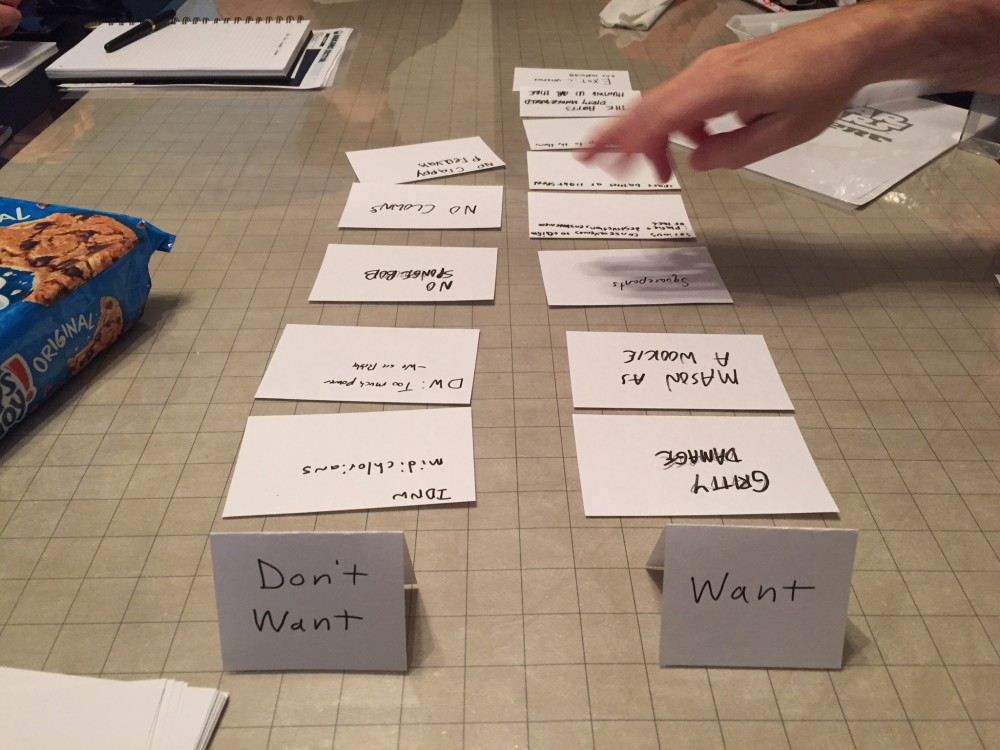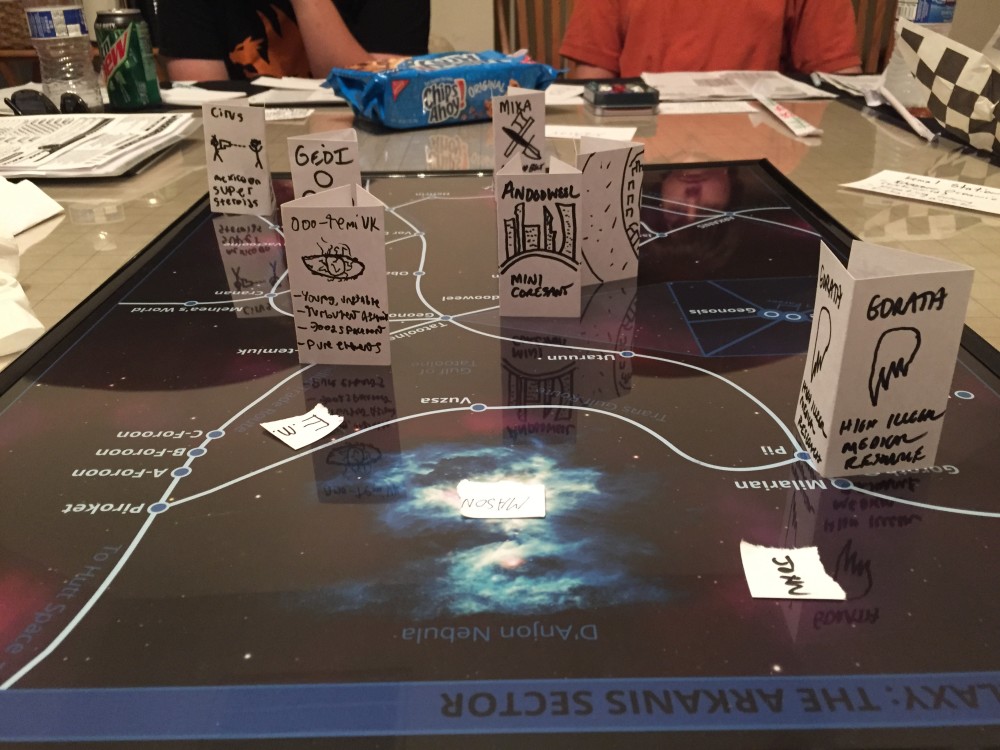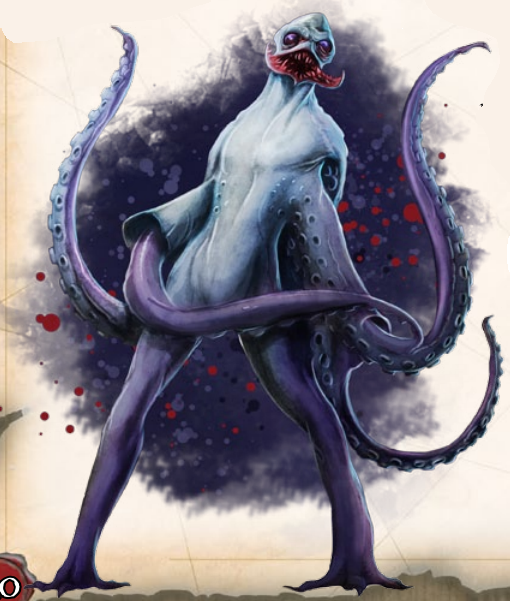 A friend of mine was asking about how to create mini-adventures on the fly. Here are three key tools all GM’s should understand. Each technique has its own unique uses. I use all three depending on the context. At the end I briefly describe how I pull all three together for a campaign.
A friend of mine was asking about how to create mini-adventures on the fly. Here are three key tools all GM’s should understand. Each technique has its own unique uses. I use all three depending on the context. At the end I briefly describe how I pull all three together for a campaign.
Rumors
A collection of about 10 rumors (usually a sentence), marked as either True or False, typically tied to a larger adventure.
False rumors are an interesting facet of dungeon exploration, because they let the designer – with just a line or two of prose – to really change the players’ perception and approach to the dungeon. (read more on rumors here).
In the Dungeons & Dragons adventure module B2 “The Keep on the Boderlands”, they have a list of rumors the PCs may encounter as they explore a town prior to entering the “Caves of Chaos” dungeon. Here are some of the rumors. Not all rumors are true; one marked with ‘F’ are False (or course, the players won’t know this):
- If you get lost, beware the eater of men!
- There are Dwarves living in the caves
- A fair maiden is imprisoned within the caves (F)
- Bree-Yark is yrch for “we surrender!” (F)
The the rumor that “‘Bree-Yark!’ is goblin-language for ‘we surrender!”. The DM is told that it actually means “Hey, Rube!” and, rather than a call for surrender, is a signal for any nearby goblins to come join in an attack! (if you’re not familiar with the term Rube, see here).
Many D&D adventure modules come with a list of rumors. If not, I’ll create my own and allow the PCs to do some information gathering before they dive into the actual quest.
Plot Hooks (aka ‘Random Encounter’)
Something that drops into the characters lap that entices the players to go on a quest.
An example: ‘Returning from their latest adventure, the characters find a dead goblin sprawled on the ground, purple-face up in the middle of their room. His swollen left hand, stuck in a glass pickle jar, is wrapped about some crumpled parchment. There’s definitely writing of some sort visible on the parchment.’ (Read this and other plot hooks here). Works best if you think about what is really going on behind the plot hook and you flesh out a short mini-adventure to tie to it.
Personally, my favorite plot hooks are simple, self explanatory, and location based. Basically a sentence written in present tense for a situation that, if pursued (or not avoided) will inevitably lead to a conflict. For example, here are two I whipped up this morning:
(Sea) You spook a pirate ship which is hiding in a lagoon or fog drift making repairs.
(Wilderness Road) In the distance a burning wagon smolders. Red-feathered arrow shafts prickle the corpses of retainers on the ground nearby. A small boy runs past you shouting ‘Help me!’. He’s pursued by brigands who already have his sister captive and wish to ransom the two orphans back to their uncle, a nearby baron.
In many cases, I’ll put together plot hooks tied to the PCs background. For example, here’s one I just created:
(Bendritch [Joe’s Character]) Bendritch glimpses a one-eyed man who has haunted his dreams since childhood. Bendritch watched his parents die at a criminal’s hand; this one-eyed man is the killer. He is part of a larger group of assassins. He was paid to kil Bendritch’s parents since they discovered the dark secret that the local ruler had been replaced by an illusionist whose doppleganging skills allow him to rule the area and feed his nefarious plans for world domination.
In both examples, that’s all the detail I’ll put into it. I’ll make the rest up on the fly.
See this great article on ‘how to create plot hooks‘.
Patron Encounters
A patron you encounter who offers you money to do a mission, typically with twists and complications.
If you are not familiar with patron encounters, these are a common way of capturing the beginning of an open-ended adventure idea in older Traveller products. Each one describes a basic mission or goal, as presented by a patron (aka the guy that hires you). It then offers you a list of up to six different options about how it could play out. These options provide inspiration, re-usability and options. If you can’t decide on a particular option, then you can roll a d6 and choose one. (Source)
Jefri haut-Oschem, Planetologist
Required: Life Sciences, Survival; Spacecraft
Reward: Cr. 2,000/day plus expenses.
Players’ Information
His Excellency haut-Oschem is a respected Planetologist, specializing in worlds that are nearly habitable. A planet might be a little too cold, or too dry, or be infested with a lethal native species. Haut-Oschem’s genius is in making tiny changes to a planet’s ecosystem or climate. All too often, a change can ripple out through the complex balances of a planetary environment and have unforeseen consequences.
Haut-Oschem requires a spacecraft and a crew trained in the sciences for a brief period of research – no more than a few weeks, possibly a month or two. While haut-Oschem has worked with the Scout Service in the past, this mission is entirely under the aegis of private research. The ship will be visiting worlds outside settled space.
Referee’s Information
Any character with contacts in the Scout service can find out that haut-Oschem has quarreled with the Survey section, and that his once-stellar career has dark clouds hanging over it. Something has gone wrong…
- Haut-Oschem has been replaced in the eyes of the Scout service by a younger researcher, Harad Leish. Old haut-Oschem wants to prove that his theories and methodologies are still valid. Leish and a laboratory ship from the Scout Service are currently surveying a jungle world inhabited by numerous hostile species. To prove his worth, haut-Oschem needs to find a way for humans to live safely on the world before the Scout service do.
- As above, but haut-Oschem is bitter, and his real plan is to sabotage Leish’s survey team.
- Haut-Oschem has discovered that he made a terrible mistake at the start of his career. He approved the settlement of a world before he fully understood the ecosystem. Every few centuries, a species of carnivorous locusts hatches in vast swarms and devours everything in their path. The characters need to find a way to stop the insects from hatching.
- As above, but haut-Oschem wants to preserve his reputation above all else. The characters need to stop the insects without revealing what they’re doing to the settlers.
- Haut-Oschem discovered something very valuable on his most recent survey, such as a massive deposit of precious metals or alien technology. He wants the characters to help him recover it.
- As above, but haut-Oschem is in a race with the Scout service. He’s not the only one to have read between the lines in his latest survey.
(Source)
Putting it All Together
See this great article on how to create a sandbox adventure setting using Patrons and other setting details. This is approximately what I do.
When kicking off a campaign, here are some steps I follow:
- Create rumors tied to any larger adventures or campaign arcs. About 6-12. Mark some as False. List these on a single piece of paper and put into a dice table format. If possible, fit it only a 3×5″ card. Roll randomly for rumors. Players may hear the same rumor more than once. Often I’ll tweak it on the fly, creating a variation of a rumor the players already heard.
- Ask questions about character’s background, and use the answers to create plot hooks tied to the characters. Write 2-3 plot hooks per character on 3×5″ cards. I’ll ask the questions in-game but create the plot hooks outside of the game between sessions.
- Create 3 or more Patron Encounters. Each Patron Encounter equates to a 3-4 hour adventure session. At a con game I’ll let the Patron adventure play out in 3.5 or so hours. In home games in a campaign context, I’ll try to let the Patron encounter play out in 2-3 hours and leave some room at the end for players to roam around doing whatever they want at the end.
Organizing and Managing These Tools
I like to record plot hooks on 3×5″ notecards, with a label for the context. The context is the environment or location (city street, dungeon, tavern, wilderness, sea, etc.) or character (each PC has one or more plot hooks tied to their background). I’ll keep them handy and just flip through the stack when things are getting boring. If you’re nearing the end of a session and you’ve not had a good conflict or fight, just grab for a great fight-inducing plot hook and throw this at the PCs.
Aside from these 3×5″ plot hook cards, I generally don’t have further notes or ideas. I’ll whip up the other details on the fly at the table, adapting it a bit to the circumstances.
Having a 1) list of example NPC names and 2) pre-generated NPC stat blocks are key tools to help things flow quickly at the table.
How many plot hooks, rumors, and patron encounters do you need? Ideally this is what I’d have:
- 3 plot hooks per environment (city street, dungeon, tavern, wilderness, sea, port), each on a 3×5″ card.
- 3 plot hooks per PC, each on a 3×5″ card.
- 6 Patron Encounters, each on a 5.5×8.5″ page in my notebook (letter size paper will work too of course).
This is enough to run a complete campaign. Usually I’ll create some dastardly, dark secret which they PCs will discover and (hopefully) defeat by the end of the campaign arc.
I usually don’t actually have all this prepared by the first or even second game. I’ll start a campaign with only 2-3 cards and 1-2 patron encounters, then build my card and patron inventory as I go.
Aside from these 3 techniques, I will also use 1 page Dungeons and pre-published adventure modules to supplement these tools in Fantasy campaigns. I non-Fantasy campaigns I use the techniques list below as my sole adventure prep tools.
Tips on Running the Game
Prep situations, not solutions. No planned adventure survives after the first encounter with the players. The players will be innovative and come up with plans you could never expect. Prepping detailed solutions before the game on the players behalf will only waste time and cause you frustration when the players ignore your ideas.
Alternate GM’s Phase and Player Phases. What I mean by this is using the Mouseguard technique of having a short GM-prepared adventure, typically based on something like a Patron Encounter or Savage Worlds 1 Sheet. Once your adventure is done, usually in 2-3 hours, it’s now the Player’s phase where you let the players drive and do whatever they want. Encourage them to dig into unresolved mysteries. Go after their enemies. If things get boring, pull out a Random Encounter from one of your plot hook cards.
Ask Players What They’re Doing Next. At the end of the game, ask players what their plans are. They want to go explore the mountain range to the south? I’ll whip up some Mountain encounters before the next game.
Don’t Overprep. Prepping material that is never used wastes time and causes GM burnout. Just prep what you need for 2-3 sessions, material that you’re pretty sure will be used or can be used in future campaigns if you don’t use it in the current campaign. Metaphorically, you’re like a machine creating a railroad track for the players, but you only lay track a few dozen feet at a time, right in front of the players, and move the track constantly as you adjust to the direction the players are going.
Read Sandbox-Style Game Systems. Read Dungeon World. Some of the best GM advice on the planet is in that book. Fate Core is another great book to read with advice on creating issues that fuel a campaign. Fiasco is a great game to help you limber up and learn to ‘wing it’ when creating story on thy fly at the table.
Pirate/High Sea Adventure Hooks
For my friend running a 50 Fathoms game 🙂
8 Adventure Hooks for use on the High Seas
5 Pirate Related Adventure Hooks
Resources for Rumors, Plot Hooks, and Patron Encounters:
Great writeup on using Hooks and Rumors
How to make a Traveller sandbox
Rumor/Random Encounter Generator











Recent Comments